Active ingredients: Azelaic acid
Finacea 15% Gel
Why is Finacea used? What is it for?
Finacea Gel contains the active ingredient azelaic acid and belongs to the category of anti-acne preparations for external (cutaneous) use. Finacea Gel is indicated for the relief of mild to moderate papulopustular acne on the face and for the treatment of papulopustular rosacea. Acne and papulopustular rosacea are associated with the presence of papules and pustules. inflammatory character.
Contraindications When Finacea should not be used
Do not use Finacea Gel if you are allergic to azelaic acid or any of the other ingredients of this medicine.
Precautions for use What you need to know before taking Finacea
Talk to your doctor or pharmacist before using Finacea Gel.
Finacea Gel is for external (cutaneous) use only. Carefully avoid contact with eyes, mouth and other mucous membranes. In case of accidental contact, wash eyes, mouth and / or affected mucous membranes with plenty of water. In case of persistent eye irritation, consult a doctor or pharmacist.
Always wash your hands after each application of Finacea Gel. It is advisable to avoid the use of alcohol-based cleansers, tinctures and astringent products, products with an abrasive or exfoliating action (peeling) when Finacea Gel is used for the treatment of rosacea.
Rarely, worsening of asthma symptoms has been reported in some patients who have been treated with azelaic acid.
Children and adolescents
The safety and efficacy in the treatment of acne have been studied in adolescents between 12 and 18 years of age (see section 3. How to use Finacea Gel). Due to a lack of data on safety and efficacy, the use of Finacea Gel is not recommended for the treatment of acne in children below 12 years of age.
Due to a lack of data on safety and efficacy, the use of Finacea Gel is not recommended for the treatment of rosacea in children and adolescents below 18 years of age.
Interactions Which drugs or foods can modify the effect of Finacea
No studies have been conducted that establish any interaction of Finacea Gel with other medicines and vice versa. Other medications or treatments should not be applied to the face in conjunction with the use of Finacea Gel.
Tell your doctor or pharmacist if you are taking, have recently taken or might take any other medicines.
Warnings It is important to know that:
Pregnancy and breastfeeding
There is limited experience with the use of azelaic acid during pregnancy. If you are pregnant or breastfeeding your doctor will decide whether you can use Finacea Gel.
Newborns should not come into contact with the skin or breasts treated with the product.
If you are pregnant or breast-feeding, think you may be pregnant or are planning to have a baby, ask your doctor or pharmacist for advice before using this medicine.
Driving and using machines
Finacea Gel does not affect the ability to drive or use machines.
Finacea Gel contains benzoic acid and propylene glycol
Benzoic Acid is mildly irritating to the skin, eyes and mucous membranes.
Propylene Glycol can cause skin irritation.
Dose, Method and Time of Administration How to use Finacea: Posology
Always use this medicine exactly as your doctor has told you. If in doubt, you should consult your doctor or pharmacist.
Finacea Gel is intended for external (cutaneous) use only.
Method of administration
Before applying Finacea Gel, thoroughly cleanse the skin with water and dry it.
It is possible to use a mild skin cleanser.
Do not use non-breathable or waterproof (occlusive) clothing or bandages and wash your hands after applying the gel.
Dosage and frequency of administration
Apply a small amount of Finacea Gel on the skin area to be treated, twice a day (in the morning and in the evening) making it penetrate with a light massage. The amount of product sufficient for the whole face is equal to about 2.5 cm, which correspond to 0.5 g of gel.
To achieve an optimal effect of the treatment it is important to use Finacea Gel continuously for the entire period of therapy.
In case of skin irritation (see paragraph "4. Possible side effects"), reduce the amount of gel for each application or the frequency of use of Finacea Gel to once a day, until the irritation disappears. If necessary, stop the treatment for a few days.
Use in children and adolescents
No dosage adjustment is necessary for the treatment of acne in adolescents aged 12 to 18 years.
Duration of treatment
The duration of treatment with Finacea Gel can vary from person to person and also depends on the severity of the skin disease. Your doctor will decide how long you need to use Finacea Gel for.
Acne: the use of Finacea Gel can be continued for several months according to the effectiveness of the treatment. A noticeable improvement can be observed after 4 weeks. If, after 1 month, you find no improvement or if your acne worsens, you should stop treatment with Finacea Gel and consult your doctor.
Rosacea: the use of Finacea Gel can be continued for several months depending on the effect of the treatment. A noticeable improvement is observed after 4 weeks of treatment. If, after 2 months, you find no improvement or if your rosacea worsens, you should stop treatment with Finacea Gel and consult your doctor.
If you forget to use Finacea Gel
Do not use a double dose to make up for any forgotten. Continue application as prescribed by your doctor.
If you stop using Finacea Gel
If you stop using Finacea Gel, the skin condition may get worse. Before stopping treatment with Finacea Gel, ask your doctor.
If you have any further questions on the use of Finacea Gel, ask your doctor or pharmacist.
Overdose What to do if you have taken too much Finacea
Even if you have accidentally used more Finacea Gel than you should, a harmful effect (intoxication) is unlikely.
Follow your doctor's instructions exactly and consult him if you are unsure.
Side Effects What are the side effects of Finacea
Like all medicines, Finacea Gel can cause side effects, although not everybody gets them. Skin irritation (e.g. burning and itching) may occur. In the majority of cases, the irritative symptoms are mild or moderate and their frequency decreases over the course of therapy.
The most frequently observed side effects included itching, burning and pain at the application site.
During the treatment with Finacea Gel, the following undesirable effects may occur, which only affect the skin area affected by the application:
Acne:
Very common (may affect more than 1 in 10 people): burning, pain, itching at the application site.
Common (may affect up to 1 in 10 people): rash, tingling or numbness sensation (paraesthesia), dry skin at the application site.
Uncommon (may affect up to 1 in 100 people): skin reaction to an external agent (contact dermatitis), abnormal redness of the skin (erythema), peeling, feeling of warmth, discoloration of the skin at the application site.
Rare (may affect up to 1 in 1000 people) *:
- Hypersensitivity, which can occur with one or more of the following adverse events: angioedema (rapid swelling under the skin), swelling of the eyes, swelling of the face, dyspnoea (shortness of breath)
- Skin irritation
- Urticaria
- Worsening of asthma.
* These side effects have been reported in post-marketing patients using azelaic acid.
Rosacea: Very common (may affect more than 1 in 10 people): burning, pain, itching at the application site.
Common (may affect up to 1 in 10 people): tingling or numbness sensation (paraesthesia), dry skin, rash, swelling (edema) at the application site.
Uncommon (may affect up to 1 in 100 people): acne, skin reaction to an external agent (contact dermatitis), abnormal redness of the skin (erythema), hives, discomfort at the application site.
Rare (may affect up to 1 in 1000 people) *:
- Hypersensitivity, which can occur with one or more of the following adverse events: angioedema (rapid swelling under the skin), swelling of the eyes, swelling of the face, dyspnoea (shortness of breath)
- Skin irritation
- Urticaria
- Worsening of asthma
* These side effects have been reported in post-marketing patients using azelaic acid.
Children and adolescents
Treatment of acne vulgaris in adolescents 12-18 years of age:
In clinical trials including adolescents, the overall incidence of adverse events of Finacea Gel was similar to that found in the entire patient population.
Reporting of side effects
If you get any side effects, talk to your doctor or pharmacist. This includes any possible side effects not listed in this leaflet. You can also report side effects directly via the national reporting system, www.agenziafarmaco.it/it/responsabili.
By reporting side effects you can help provide more information on the safety of this medicine.
Expiry and Retention
Keep this medicine out of the sight and reach of children.
Do not use this medicine after the expiry date which is stated on the carton and tube after "EXP". The expiry date refers to the last day of that month.
Finacea Gel does not require any particular storage conditions.
Do not throw any medicines via wastewater or household waste. Ask your pharmacist how to throw away medicines you no longer use. This will help protect the environment.
Other Information
What Finacea Gel contains
- The active ingredient is azelaic acid (each gram of Finacea Gel contains 150 mg of azelaic acid).
- The other ingredients are: Benzoic acid (E 210), carbomers, edetate disodium, lecithin, polysorbate 80, propylene glycol, purified water sodium hydroxide, and medium chain triglycerides.
Description of the appearance of Finacea Gel and contents of the pack
Finacea Gel is a white to yellowish-white opaque gel.
Finacea Gel is available in packs of 5, 30 or 50 g of gel.
Not all pack sizes may be marketed.
Source Package Leaflet: AIFA (Italian Medicines Agency). Content published in January 2016. The information present may not be up-to-date.
To have access to the most up-to-date version, it is advisable to access the AIFA (Italian Medicines Agency) website. Disclaimer and useful information.
01.0 NAME OF THE MEDICINAL PRODUCT
FINACEA 15% GEL
02.0 QUALITATIVE AND QUANTITATIVE COMPOSITION
1 g of Finacea Gel contains 150 mg (15%) of azelaic acid.
Excipients with known effects:
Benzoic acid 1 mg / g of gel
Propylene glycol 0.12 g / g of gel
For the full list of excipients, see section 6.1.
03.0 PHARMACEUTICAL FORM
Gel.
White to yellowish-white opaque gel.
04.0 CLINICAL INFORMATION
04.1 Therapeutic indications
• For the relief of mild to moderate forms of papulo-pustular acne on the face.
• For the topical treatment of papular-pustular rosacea.
04.2 Posology and method of administration
Finacea 15% Gel is for cutaneous use only.
Dosage
Finacea Gel must be applied to the skin area to be treated twice a day (in the morning and in the evening), making it penetrate with a light massage. The amount of product sufficient for the whole face is approximately 2.5 cm, which correspond to 0.5 g of gel.
Pediatric population
Use in adolescents (12-18 years) for the treatment of acne vulgaris. No dose adjustment is required when Finacea Gel is administered to adolescents aged 12-18 years.
The safety and efficacy of Finacea Gel for the treatment of acne vulgaris in children under the age of 12 have not been established. The safety and efficacy of Finacea Gel for the treatment of papulopustular rosacea in children under the age of 18 have not been established.
Geriatric population
No targeted studies have been conducted in patients aged 65 and over.
Patients with liver disease
No targeted studies have been conducted in patients with liver disease.
Patients with kidney disease
No targeted studies have been conducted in patients with kidney disease.
Method of administration
Before applying Finacea Gel, wash the skin thoroughly with water and dry it. It is also possible to use a mild skin cleanser.
Avoid using occlusive clothing or bandages and wash your hands after applying the gel.
In case of skin irritation (see section 4.8 "Undesirable effects"), decrease the quantity of gel for each application, or reduce the frequency of use of Finacea Gel to once a day until the irritation disappears. If necessary, suspend the treatment for a few days.
It is important to use Finacea Gel continuously for the duration of the treatment.
The duration of treatment with Finacea Gel may vary from patient to patient and also depends on the severity of the skin disease.
Acne: In general, there is a noticeable improvement after 4 weeks. For best results, Finacea Gel treatment can be continued for several months according to the clinical outcome. In case there is no improvement after 1 month or in case of acne exacerbation, stop using Finacea Gel and consider other therapeutic alternatives.
Rosacea: In general there is a noticeable improvement after 4 weeks. For best results, Finacea Gel treatment can be continued for several months according to the clinical outcome. In case there is no improvement after 2 months or in case of rosacea exacerbation, stop using Finacea Gel. and consider other therapeutic alternatives.
04.3 Contraindications
Hypersensitivity to the active substance or to any of the excipients listed in section 6.1.
04.4 Special warnings and appropriate precautions for use
For external use only.
Finacea Gel contains benzoic acid which is mildly irritating to the skin, eyes and mucous membranes, and propylene glycol, which can cause skin irritation. Carefully avoid contact with eyes, mouth and other mucous membranes, and instruct patients appropriately in this regard (see section 5.3 "Preclinical safety data"). In case of accidental contact, wash eyes, mouth and / or affected mucous membranes with plenty of water. If eye irritation persists, seek medical attention. Wash hands after each application of Finacea Gel.
It is advisable to avoid the concomitant use of alcohol-based cleansers, tinctures and astringent products, products with abrasive or exfoliating (peeling) action in patients who use Finacea Gel for the treatment of rosacea.
During post-marketing surveillance, worsening of asthma has rarely been reported in patients treated with azelaic acid.
04.5 Interactions with other medicinal products and other forms of interaction
No interaction studies have been conducted. The composition of Finacea Gel does not suggest any undesirable interactions for the individual components that could adversely affect the safety of the product. No drug-specific interactions were observed in the controlled clinical trials.
04.6 Pregnancy and breastfeeding
Pregnancy
There are no adequate and well-controlled studies of the topical administration of azelaic acid in pregnant women.
Studies in animals indicate the possibility of effects related to pregnancy, embryo-fetal development, parturition or postnatal development. However, the no-adverse dose levels observed in the study animals were 3 to 32 times the maximum recommended human dose on body surface area. (see paragraph 5.3 "Preclinical safety data").
Caution should be exercised when prescribing azelaic acid to pregnant women.
Feeding time
It is not known whether azelaic acid is excreted in human milk in vivo. However, an in vitro test performed with an equilibrium dialysis technique has shown that the drug can pass into breast milk. The distribution of azelaic acid in breast milk, however, is not expected to cause a significant change from baseline milk azelaic acid levels, as azelaic acid is not concentrated in milk and less than 4% of the acid. Topically applied azelaic is absorbed systemically, not increasing exposure to endogenous azelaic acid above physiological levels.
However, caution is required when Finacea Gel is administered to a nursing woman.
Newborns should not come into contact with the skin / breasts treated with the product.
Fertility
There are no data on the effects of Finacea Gel on human fertility. Results obtained from animal studies have shown no effects on fertility in male or female rats (see section 5.3 Preclinical safety data).
04.7 Effects on ability to drive and use machines
Finacea Gel does not affect the ability to drive and use machines.
04.8 Undesirable effects
The most frequently observed side effects in clinical trials and post-marketing surveillance included itching, burning and pain at the application site.
The frequencies of undesirable effects observed in clinical trials and post-marketing surveillance and listed below in the table have been defined according to the MedDRA frequency convention:
Very common (≥1 / 10);
Common (≥1 / 100,
Uncommon (≥1 / 1000);
Rare (≥1 / 10,000,
Very rare (
Not known (frequency cannot be estimated from the available data).
* for the rosacea indication
** for the acne indication
1 These adverse reactions have been reported during post-registration use of Finacea Gel
Generally, local skin irritation subsides during the course of treatment.
Pediatric population
Treatment of acne vulgaris in adolescents aged 12-18 years:
In 4 phase II and II / III clinical trials that included adolescents aged 12-17 years (120/383; 31%), the total incidence of adverse events for Finacea Gel was similar for age groups 12-17. years (40%), aged ≥18 years (37%) and for the entire patient population (38%). This similarity was also found for the 12-20 year age group (40%).
Reporting of suspected adverse reactions
Reporting of suspected adverse reactions occurring after authorization of the medicinal product is important as it allows continuous monitoring of the benefit / risk balance of the medicinal product. Healthcare professionals are asked to report any suspected adverse reactions via the national reporting system. www.agenziafarmaco.gov.it/it/responsabili.
04.9 Overdose
Given the very low toxicity of azelaic acid, both locally and systemically, intoxication is unlikely.
05.0 PHARMACOLOGICAL PROPERTIES
05.1 Pharmacodynamic properties
Pharmacotherapeutic group: other anti-acne preparations for topical use.
ATC code: D10AX03.
Acne:
It is assumed that the principle on which the therapeutic efficacy of azelaic acid in acne is based lies in an antimicrobial action and in a direct influence on follicular hyperkeratosis.
In vitro and in vivo, azelaic acid inhibits the proliferation of keratinocytes and normalizes the terminal processes of epidermal differentiation, which are altered in acne.
Clinically, a significant reduction in the colonization density of Propionibacterium acnes and the fraction of free fatty acids in the lipids of the skin surface.
In two double-blind randomized clinical trials, Finacea Gel was significantly superior to its vehicle in median reduction in the sum of papules and pustules and was 6% less effective than 5% benzoyl peroxide (p = 0.056).
In these studies, the efficacy of Finacea Gel on comedones was evaluated as a secondary parameter. Finacea Gel was shown to be more effective than its vehicle in the median reduction of comedones, and less effective than 5% benzoyl peroxide.
Rosacea:
While the pathophysiology of rosacea is not yet fully understood, there is a growing consensus that inflammation, involving the increase of several pro-inflammatory effector molecules, such as kallikrein-5 and cathelicidin as well as oxygen reactive species (ROS) is a central process in this disease.
Azelaic acid has been shown to modulate the inflammatory response in normal human keratinocytes through: a) receptor activation? peroxisome proliferator-activated (PPAR?); b) inhibition of the trans-activation of nuclear factor kB (NF-kB); c) inhibition of pro-inflammatory cytokine production and d) inhibition of ROS release from neutrophils, as well as the scavenging effect on existing ROS.
In addition, azelaic acid has been shown to directly inhibit the expression of kallikrein-5 and cathelicidin in three models: in vitro(human keratinocytes), on murine skin and facial skin of patients with rosacea.
These anti-inflammatory properties of azelaic acid may play a role in the treatment of rosacea.
While the clinical significance of these findings regarding kallikrein-5 and cathelicidin and their impact on rosacea pathophysiology has not yet been fully demonstrated in an extensive clinical trial, initial human facial skin studies appear to confirm the results. in vitro and murines.
In the two 12-week vehicle-controlled clinical trials of papulo-pustular rosacea, Finacea Gel demonstrated statistically significant superiority over its vehicle in the reduction of inflammatory lesions, the investigator's overall assessment, the overall rate of improvement and the improvement of erythema.
In the clinical study on papulo-pustular rosacea versus the comparator active ingredient, metronidazole 0.75% gel, Finacea Gel demonstrated a significant superiority in the reduction of the number of lesions (72.7% versus 55.8%), in the overall evaluation improvement and improvement of erythema (56% vs 42%). The incidence of adverse skin events, which in most cases were mild to moderate, was 25.8% with Finacea Gel and 7, 1% with metronidazole 0.75% gel.
There was no evident effect on telangiectasias in the three clinical studies.
05.2 Pharmacokinetic properties
After topical application of the gel, azelaic acid penetrates all skin layers. Penetration is faster into broken skin than into intact skin. After a single application of 1 g of azelaic acid (administered in the form of 5 g of Skinoren 20% cream), the total amount absorbed percutaneously was equal to 3.6% of the applied dose. Clinical studies conducted on acne patients have indicated similar absorption values of azelaic acid with Finacea Gel and Skinoren Cream.
A part of the azelaic acid absorbed through the skin is excreted unchanged in the urine. The residual part is degraded by a process of β-oxidation into shorter-chain dicarboxylic acids (C7, C5), also found in the urine .
Steady-state plasma azelaic acid levels in rosacea patients after 8 weeks of treatment with Finacea Gel twice daily remained within the range also observed in volunteers and acne patients undergoing a normal diet. This indicates that the percutaneous absorption of azelaic acid following two daily applications of Finacea Gel does not change the systemic load of azelaic acid derived from diet and endogenous sources in a clinically meaningful way.
05.3 Preclinical safety data
Non-clinical data reveal no special hazard for humans based on conventional studies of repeated dose toxicity and reproductive toxicity.
Embryo-fetal development studies with oral administration of azelaic acid to rats, rabbits and cynomolgic monkeys during the period of organogenesis revealed embryotoxicity at doses where some maternal toxicity was observed. No teratogenic effects were observed. The NOAEL embryo-fetal was 32 times the MRHD based on BSA in rats, 6.5 times the MRHD based on BSA in rabbits and 19 times the MRHD based on BSA in monkeys (see section 4.6 "Fertility, pregnancy and lactation" ).
In a peri and postnatal development study conducted in rats, in which azelaic acid was administered orally from day 15 of gestation to and including day 21 post partum, modest postpartum developmental alterations were noted. birth rate of fetuses with oral doses that resulted in some maternal toxicity NOAEL was 3 times the MRHD based on BSA No effects on sexual development of fetuses were noted in this study.
In vitro and in vivo studies with azelaic acid have provided no evidence of mutagenic effects on somatic and germ cells.
Long-term conventional studies on carcinogenicity have not been conducted with oral administration of azelaic acid.
In a 26-week skin carcinogenicity study using male and female transgenic mice (Tg.AC), Finacea Gel and the carrier gel increased the number of papillomas at the treatment site in male animals after 2 daily applications. This effect was not observed after single application in male and female mice. This effect may be associated with vehicle application. The clinical relevance of animal observations to humans is unclear, especially in light of the dubious validity of the Tg.AC test system.
If azelaic acid comes into contact with the eyes of monkeys and rabbits, signs of moderate to severe irritation appear. Therefore, avoid contact with the eyes.
Azelaic acid given once intravenously had no effects on the nervous system (Irwin test), cardiovascular function, intermediate metabolism, smooth muscle as well as liver and kidney function.
06.0 PHARMACEUTICAL INFORMATION
06.1 Excipients
Benzoic acid (E210)
Carbomers
Disodium edetate
Lecithin
Polysorbate 80
Propylene glycol
Purified water
Sodium hydroxide
Medium-chain triglycerides
06.2 Incompatibility
Not relevant.
06.3 Period of validity
3 years.
06.4 Special precautions for storage
This medicine does not require any special storage conditions.
06.5 Nature of the immediate packaging and contents of the package
Aluminum tube internally coated with epoxy resin with polyethylene screw cap.
5, 30 and 50 g tubes.
Not all pack sizes may be marketed.
06.6 Instructions for use and handling
No special instructions.
07.0 MARKETING AUTHORIZATION HOLDER
Bayer S.p.A., Viale Certosa, 130 - 20156 Milan
08.0 MARKETING AUTHORIZATION NUMBER
5 g tube: A.I.C. No. 036818019
30 g tube: A.I.C. No. 036818021
50 g tube: A.I.C. No. 036818033
09.0 DATE OF FIRST AUTHORIZATION OR RENEWAL OF THE AUTHORIZATION
Date of first authorization: 03/07/2002
Date of last renewal: 03/07/2007
10.0 DATE OF REVISION OF THE TEXT
02/2017

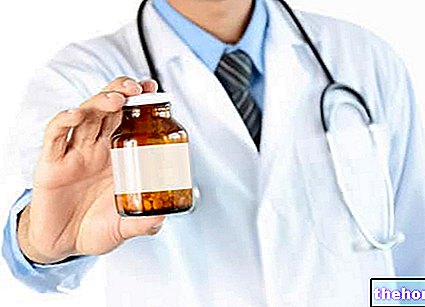

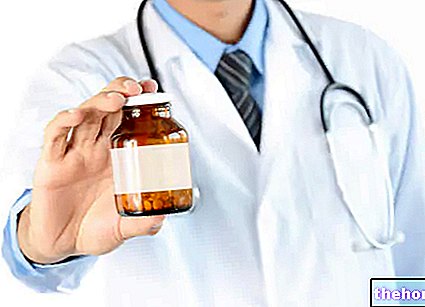
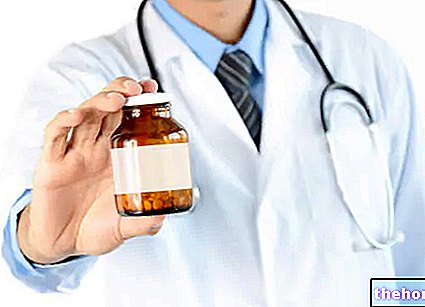
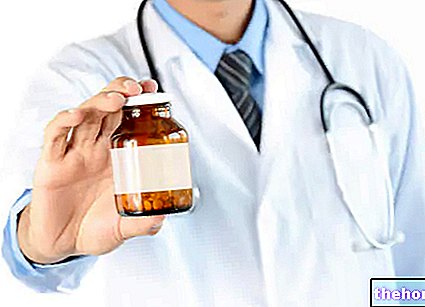
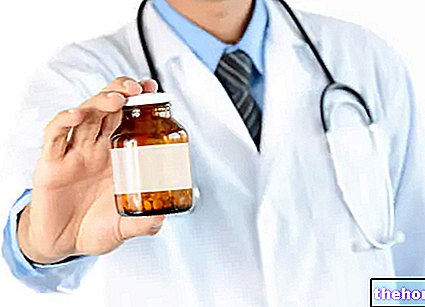
















-nelle-carni-di-maiale.jpg)




